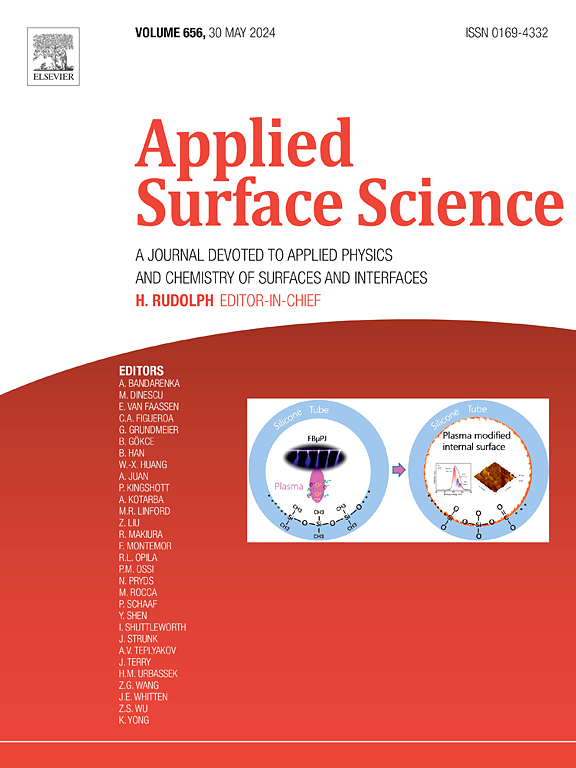Atomically dispersed Co–N5 sites in graphene nanofoams for piezocatalytic N2 fixation driven by mild hydromechanical energy
IF 6.3
2区 材料科学
Q2 CHEMISTRY, PHYSICAL
引用次数: 0
Abstract
Novel Cobalt/Nitrogen co-doped graphene piezoelectric nanofoams (CoNG), featuring a confined Co-N5 configuration with four coordinating N atoms being from the same NG layer and an additional coordinating N atom coming from an adjacent nitrogen doped graphene (NG) layer, have been synthesized for nitrogen fixation under low-frequency hydromechanical energy. The Co–N5 configuration could increase local dipole moments in the a, b and c directions, thereby significantly improving the piezoelectric properties. On the other hand, the Co–N bonds bridging between neighboring NG layers effectively serve as interlayer electronic transport channels, enhancing carrier spatial separation in CoNG. It is due to the introduction of the versatile Co–N5 conformation that CoNG is indeed capable of piezocatalytic nitrogen fixation under low-frequency stirring force, yielding NH4+ and H2 at rates of 0.64 and 14.10 µmol·g−1·h−1, respectively. Which are markedly higher than those achieved with NG (0.32 μmol·g−1·h−1 and 9.51 μmol·g−1·h−1). Isotopic 15N2 labeling confirms the nitrogen source of ammonia. Furthermore, DFT calculations reveal that nitrogen molecules adsorb predominantly in an end-on manner at the Co sites and form NH3 in a distal hydrogenation pathway. Moreover, CoNG demonstrates 16.5-fold and 3.4-fold enhancements in water splitting and rhodamine B degradation efficiency, respectively, in comparison with NG. This work establishes a sustainable pathway for ambient-condition ammonia synthesis and expands the application scope of piezocatalysis in green chemistry.

微流体机械能驱动下石墨烯纳米泡沫中原子分散的Co-N5位点的压催化固氮
本文合成了一种新型的钴/氮共掺杂石墨烯压电纳米泡沫(CoNG),该泡沫具有Co-N5结构,其中四个配位N原子来自同一层石墨烯,另外一个配位N原子来自相邻的氮掺杂石墨烯(NG)层。Co-N5结构可以增加a、b和c方向的局域偶极矩,从而显著改善压电性能。另一方面,相邻NG层之间的Co-N键有效地充当了层间电子传输通道,增强了CoNG中载子的空间分离。由于引入了通用的Co-N5构象,CoNG确实能够在低频搅拌力下进行压催化固氮,NH4+和H2的产率分别为0.64和14.10 µmol·g−1·h−1。显著高于NG处理(0.32 μmol·g−1·h−1和9.51 μmol·g−1·h−1)。同位素15N2标记证实了氨的氮源。此外,DFT计算表明,氮分子主要在Co位点以端对端方式吸附,并在远端加氢途径中形成NH3。此外,与NG相比,CoNG在水分解和罗丹明B降解效率方面分别提高了16.5倍和3.4倍。建立了环境条件下氨合成的可持续途径,拓展了压电催化在绿色化学中的应用范围。
本文章由计算机程序翻译,如有差异,请以英文原文为准。
求助全文
约1分钟内获得全文
求助全文
来源期刊

Applied Surface Science
工程技术-材料科学:膜
CiteScore
12.50
自引率
7.50%
发文量
3393
审稿时长
67 days
期刊介绍:
Applied Surface Science covers topics contributing to a better understanding of surfaces, interfaces, nanostructures and their applications. The journal is concerned with scientific research on the atomic and molecular level of material properties determined with specific surface analytical techniques and/or computational methods, as well as the processing of such structures.
 求助内容:
求助内容: 应助结果提醒方式:
应助结果提醒方式:


